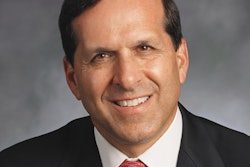
Dr. Roger P. Levin brings you the most thought-provoking topics from the Dental Business Study Clubs, an organization focused on the business of successful dentistry. Each month, Dr. Levin will explore an aspect of the business of dentistry in detail.
Based on measurements of more than 30,000 practices over almost 35 years, we can project with confidence that most practices will lose the equivalent of two years of production for every 20 years. This 10% loss and the associated waste of time can be mostly avoided if critical areas are addressed. Keep watch over the following four areas to prevent production loss in your practice.
4 areas to watch
1. No-shows
 Roger P. Levin, DDS, is the executive founder of the Dental Business Study Clubs.
Roger P. Levin, DDS, is the executive founder of the Dental Business Study Clubs.No-shows are a silent killer that eats up tremendous amounts of time with no associated production. When a patient doesn't show, the time can never be recovered. At Walmart or Target, a product on the shelf might not sell today but has an excellent chance of selling the next day or next week. However, a no-show in a dental office contributes to significant production loss as there is no way to use that time again.
We suggest the following tips to reduce the chance of patients not showing up:
- Call every potential no-show at precisely five minutes after the patient is due. Using excellent scripting to make it clear that the practice cannot schedule the patient in the next few days or even the next few weeks. This creates a perception of demand and a sense of urgency. Schedule the appointment for several weeks out and then in one week call the patient to let them know that there are some new options to bring them in sooner.
- Tell patients who miss appointments for the second time that there is a $100 fee for missed appointments, but it will not be charged this time. After that, any patient who misses two appointments in one year should no longer be part of the office because research has shown that these patients cause practices to lose money over 10- and 20-year periods of time.
2. Patient attrition
The Levin Group Data Center has continually found that the top 10% of practices have attrition rates (annual loss of patients) of about 7.5%. Practices outside the top 10% experience an attrition rate of 12% to 15%.
How to minimize patient attrition:
- It is crucial to keep patients scheduled. At any given time, there are patients who do not have appointments. Gradually, some of these patients will be lost and contribute to a higher attrition rate. Administrative staff should work every day to contact overdue patients and get them scheduled. When scripted for excellent customer service, patients will not feel harassed. Instead, they will be glad to make an appointment. The goal is to bring your annual patient attrition rate down to 7% to 8%, which will increase the patient base every 10 years by 70% more than it would otherwise.
- It is essential to build high value for dental hygiene in every appointment. Many practices think they are doing this, but, in reality, they are not creating enough value for patients to keep their appointments.
- Have hygienists take advantage of their relationships with their patients by doing their own scheduling. When dental hygienists do their own scheduling, patients are more likely to keep their appointments.
3. Case presentation
Many patients receive treatment plans that are never completed. Most offices do not have a sound follow-up system for incomplete treatment, which results in loss of production.
You can create an effective follow-up system. Have the front desk staff reach out to patients to help them get scheduled. If the patient does not want to begin treatment at this time, then dental hygienists should routinely ask patients about treatment plans during hygiene visits.
Many patients will eventually accept treatment when they are ready. Over time, this contributes to extra production that would've been lost if no one ever bothered to revisit the treatment plan with the patient.
4. Patient financing
“Practices are losing production on many patients who don't know that patient financing is available.”
Many patients don't believe they can afford treatment even if there is a payment plan. There are companies that provide numerous patient financing options, some of which may be interest-free. When a patient is offered a six-month, interest-free opportunity for excellent dental care, it can help tip the scales toward case acceptance. Practices are losing production on many patients who don't know that patient financing is available.
We recommend telling your patients about financing options. Let all patients know at the beginning of treatment plans that several options are available, including interest-free financing. When patients hear the words "interest-free financing," they perk up and start believing that they can afford treatment, which greatly enhances their interest in moving forward.
Success of the practice
Because of inefficient systems, many dental practices lose the equivalent of two years of production for every 20 years in practice. If dental teams could cut this even in half, it would make a significant difference in the success of the practice.
Roger P. Levin, DDS, is the executive founder of the Dental Business Study Clubs. To contact Dr. Levin, or to join the 40,000 dental professionals who receive his Practice Production Tip of the Day, visit www.levingroup.com or email [email protected].
The comments and observations expressed herein do not necessarily reflect the opinions of DrBicuspid.com, nor should they be construed as an endorsement or admonishment of any particular idea, vendor, or organization.


















